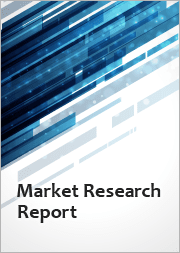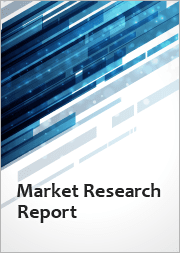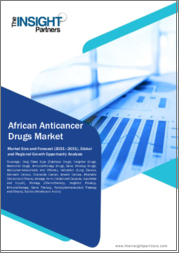
|
시장보고서
상품코드
1623076
세계의 항악성종양제 시장 규모 : 제품별, 용도별, 지역별, 범위 및 예측Global Anti-Neoplastic Agents Market Size By Product, By Application, By Geographic Scope And Forecast |
||||||
항악성종양제 시장 규모 및 예측
항악성종양제 시장 규모는 2023년에 1,257억 1,000만 달러로 평가되었고, 2024년부터 2030년까지 7.1%의 연평균 복합 성장률(CAGR)을 나타낼 전망이며, 2030년에는 2,854억 9,000만 달러에 달할 것으로 예측됩니다.
세계의 항악성종양제 시장 성장 촉진요인
항악성종양제 시장 성장 촉진요인은 다양한 요인에 영향을 받을 수 있습니다.
암 이환율 증가 :
항악성종양제 시장은 세계의 암 이환율 상승에 큰 영향을 받고 있습니다. 인구의 고령화, 라이프 스타일의 변화, 환경 요인 등의 결과로 암 이환율이 상승하기 때문에 항신생물제 등의 효율적인 암 치료에 대한 요구가 높아지고 있습니다.
암 연구의 진전 :
항악성종양제 시장 개척은 암의 분자 생물학적 원인 규명과 맞춤 치료법의 개발이 진행되고 있는 데 따른 것입니다. 기존 화학요법에 비해 표적요법은 부작용이 적고 보다 초점을 맞춘 치료법을 제공하기 때문에 사용률이 향상되고 시장이 확대되고 있습니다.
기술 진보 :
항악성종양제의 안전성과 효능은 리포솜, 나노입자, 테일러 메이드의 약물 전달 플랫폼 등 약물 전달 시스템의 진보에 의해 향상되고 있습니다. 환자의 체감이나 치료 성적의 향상을 통해서, 이러한 기술 개발이 시장 개척을 지탱하고 있습니다.
건강 관리 지출 확대 :
항악성종양제 등 최첨단 암 치료의 채용은 특히 개발도상국에서의 헬스케어 지출 증가에 의해 지원되고 있습니다. 환자 지식의 향상, 보험 적용 범위의 확대, 정부의 이니셔티브는 모두, 이러한 치료를 보다 가깝게 하는 데 도움이 되고 있습니다.
파이프라인 개발 :
시장 확대의 원동력이 되고 있는 것은 다양한 유형의 암을 표적으로 하는 혁신적인 항악성종양제의 강력한 파이프라인입니다. 제약 기업이나 학술 기관은, 신규 물질이나 치료 레지멘의 개발 및 시험을 통해서, 치료 선택지의 종류를 항상 늘리고 있습니다.
치료 성적 향상 :
표적 항악성종양제는 유전적 체질이나 종양 바이오마커 등의 환자의 특징을 고려하여 치료 계획을 세우는 맞춤형 의료의 경향에 의해 높은 수요가 있습니다. 개별화 기술을 통해 치료 성적이 향상되고 부작용도 적어지기 때문에 시장은 확대되고 있습니다.
규제 당국 지원 :
항악성종양제 시장 개척은 의약품 개발을 가속화하기 위한 규제 프로그램에 의해 촉진되고 있습니다. 이러한 이니셔티브의 예로는 승인 프로세스의 신속화나 희귀 질병용 의약품(Ofan Drug) 분류에 대한 인센티브 등을 들 수 있습니다. 유망한 규제의 틀은 신약의 신속한 상업화를 촉진하고 시장 확대를 뒷받침합니다.
세계 고령화 :
항악성종양제에 대한 요구는 특히 선진공업국에서 암 이환율 상승의 원인이 되는 인구의 고령화에 의해 높아지고 있습니다. 고령자는 암 위험을 높이기 위해 치료비를 올리고 시장을 확대하고 있습니다.
신흥 경제국 :
라틴아메리카, 아프리카, 아시아태평양의 신흥 국가에서는 항악성종양제 시장의 성장 여지가 매우 큽니다. 이들 지역에서는 가처분소득 증가, 급속한 도시화, 헬스케어 인프라 정비 등의 요인으로 선진적인 암 치료를 보다 널리 이용할 수 있게 되고 있습니다.
파트너십 및 협업 :
제약기업, 학술기관, 의료기관이 제휴하여 의약품 개발과 상업화 이니셔티브를 추진함으로써 시장개척에 박차를 가할 수 있습니다. 파트너십은 정보 공유, 자원 공유, 보완 기술에 대한 접근을 촉진함으로써 시장에서 항악성종양제의 경쟁력을 높입니다.
세계의 항악성종양제 시장 성장 억제요인
항신 생물 약물 시장의 경우 여러 요인이 시장 성장 억제요인 또는 과제로 작용할 수 있습니다. 이들에는 다음이 포함됩니다. :
엄격한 법률 :
엄격한 법률 : 항악성종양제의 판매 및 승인에 대한 엄격한 법률이 있으므로 제조업체는 신제품 출시가 지연되거나 비용이 증가할 수 있습니다.
높은 개발 비용 :
신규 항악성종양제의 개발에는 다액의 연구개발이 필요하며, 다액의 비용이 들 가능성이 있습니다. 게다가 임상 시험의 실패율로 인해 제약 기업의 비용 부담은 더욱 증대됩니다.
특허 끊기 :
주요 항악성종양제의 특허가 만료되면 제네릭 의약품이 시장에 진입할 수 있으며 가격이 하락하고 선발 제조업체 시장 점유율이 떨어집니다.
부작용 :
항악성종양제는 효과적이지만 메스꺼움, 구토, 탈모, 면역억제 등 심각한 부작용을 수반하는 경우가 많습니다. 이러한 부작용을 걱정한 나머지, 의사의 처방율이나 환자의 컴플리언스가 제한될 수도 있습니다.
내성 개발 :
시간이 지남에 따라 종양 세포는 항악성종양제에 대한 내성을 획득할 수 있으므로 현재 치료법의 효능이 떨어지고 새로운 치료법의 개발이 필요합니다.
건강 관리에 대한 액세스 제한 :
특정 지역, 특히 개발도상국에서는 의료기관에 대한 접근 부족과 과도한 치료비로 인해 환자가 항악성 종양제를 사용하는 것을 제한할 수 있습니다.
기술적인 어려움 :
안전성과 효능을 향상시킨 신규 항악성종양제의 개발에는 기술적인 어려움이 수반되어, 다액의 연구개발비가 필요합니다.
대체 요법과의 경쟁 :
면역요법과 표적요법은 암치료에서 점점 보급되고 있는 2가지 대체요법입니다. 기존의 항악성종양제는 그 유효성과 입수 가능성이 높아지고 있기 때문에 이러한 대체 요법과의 경쟁에 직면할 가능성이 있습니다.
목차
제1장 세계의 항악성종양제 시장 : 서문
- 시장 개요
- 조사 범위
- 전제조건
제2장 주요 요약
제3장 검증된 시장 조사의 조사 방법
- 데이터 마이닝
- 밸리데이션
- 1차 자료
- 데이터 소스 일람
제4장 세계의 항악성종양제 시장 전망
- 개요
- 시장 역학
- 성장 촉진요인
- 억제요인
- 기회
- Porter's Five Forces 모델
- 밸류체인 분석
제5장 세계의 항악성종양제 시장 : 제품별
- 개요
- 화학요법제
- 생물학적 및 면역요법제
- 맞춤형 의료
제6장 세계의 항악성종양제 시장 : 용도별
- 개요
- 병원
- 진료소
- 암 재활센터
- 외래수술센터(ASC)
제7장 세계의 항악성종양제 시장 : 지역별
- 북미
- 미국
- 캐나다
- 멕시코
- 유럽
- 독일
- 영국
- 프랑스
- 기타 유럽
- 아시아태평양
- 중국
- 일본
- 인도
- 기타 아시아태평양
- 세계 기타 지역
- 라틴아메리카
- 중동 및 아프리카
제8장 세계의 항악성종양제 시장 : 경쟁 구도
- 개요
- 각사 시장 랭킹
- 주요 개발 전략
제9장 기업 프로파일
- Hoffmann-La Roche
- Amgen
- Bristol-Myers Squibb Company
- Baxter
- Boehringer Ingelheim
- Bayer
- Teva pharmaceutical Industries
- Johnson & Johnson
- Merck
- Pfize
- Accord Healthcare
- Lundbeck
- AbbVie
제10장 부록
- 관련 보고서
Anti-Neoplastic Agents Market Size And Forecast
Anti-Neoplastic Agents Market size was valued at USD 125.71 Billion in 2023 and is projected to reach USD 285.49 Billion by 2030 , growing at a CAGR of 7.1% during the forecasted period 2024 to 2030.
Global Anti-Neoplastic Agents Market Drivers
The market drivers for the Anti-Neoplastic Agents Market can be influenced by various factors. These may include:
Growing Cancer Incidence:
The market for anti-neoplastic agents is significantly influenced by the rising incidence of cancer worldwide. The need for efficient cancer treatments, such as anti-neoplastic drugs, is increasing as cancer rates rise as a result of ageing populations, changing lifestyles, and environmental factors.
Progress in Cancer Research:
The market for anti-neoplastic drugs is expanding due to ongoing efforts to better understand the molecular causes of cancer and to develop tailored treatments. Compared to conventional chemotherapy, targeted therapies provide more focused treatment options with fewer side effects, which has improved usage and expanded the market.
Technological Advancements:
The safety and effectiveness of anti-neoplastic drugs are improved by advances in drug delivery systems, including as liposomes, nanoparticles, and tailored drug delivery platforms. Through bettering patient experiences and treatment outcomes, these technology developments support market expansion.
Growing Healthcare Expenditure:
The adoption of cutting-edge cancer treatments, such as anti-neoplastic drugs, is supported by rising healthcare spending, especially in developing nations. Increased patient knowledge, insurance coverage expansions, and government initiatives all help to make these treatments more accessible.
Pipeline Development:
The market's expansion is fueled by a strong pipeline of innovative anti-neoplastic drugs that target different types of cancer. The variety of therapeutic alternatives is constantly being increased by pharmaceutical corporations and academic institutions through the development and testing of novel substances and treatment regimens.
Improved Treatment Outcomes:
Targeted anti-neoplastic drugs are in high demand due to the trend towards personalized medicine, in which patient features such as genetic makeup and tumor biomarkers are taken into account when designing a treatment plan. The market is expanding because personalized techniques result in better treatment outcomes and fewer side effects.
Regulatory Support:
Market access for anti-neoplastic drugs is facilitated by regulatory programmes that aim to accelerate drug development. Examples of these initiatives include faster approval processes and incentives for orphan drug classification. Promising regulatory frameworks facilitate the expeditious commercialization of novel medicines, hence propelling market expansion.
Global Ageing Population:
The need for anti-neoplastic medications is driven by the ageing population, especially in industrialized nations where it is a contributing factor to the rising incidence of cancer. Due to their increased cancer risk, older persons are driving up treatment costs and expanding the market.
Emerging Economies:
The market for anti-neoplastic drugs has enormous room to grow in emerging economies in Latin America, Africa, and Asia-Pacific. Advanced cancer treatments are more widely accessible in these areas due to factors like rising disposable incomes, rapid urbanization, and improved healthcare infrastructure.
Partnerships and Collaborations:
Pharmaceutical corporations, academic institutions, and healthcare organizations work together to expedite medication development and commercialization initiatives, which in turn spurs market expansion. Partnerships increase the competitiveness of anti-neoplastic agents in the market by facilitating information sharing, resource sharing, and access to complementary technologies.
Global Anti-Neoplastic Agents Market Restraints
Several factors can act as restraints or challenges for the Anti-Neoplastic Agents Market. These may include:
Strict laws:
Manufacturers may have difficulties as a result of the strict laws governing the marketing and approval of anti-neoplastic drugs, which could cause delays in the launch of new products and higher expenses.
High Development Costs:
Developing novel anti-neoplastic drugs requires a significant amount of research and development, which can be expensive. Furthermore, the cost burden on pharmaceutical businesses is further increased by the failure rate in clinical trials.
Patent Expiration:
When major anti-neoplastic medications' patents expire, generic competitors might join the market, driving down prices and eroding market share for the original producers.
Side Effects:
Anti-neoplastic drugs, although effective, frequently have serious side effects such as nausea, vomiting, hair loss, and immunosuppression. Physician prescription rates and patient compliance may be restricted due to worries about these negative effects.
Resistance Development:
Over time, tumor cells may become resistant to anti-neoplastic drugs, which will decrease the efficacy of current therapies and call for the creation of new ones.
Limited Access to Healthcare:
In certain areas, especially in developing nations, patients' access to anti-neoplastic drugs may be restricted by a lack of access to healthcare facilities and excessive treatment expenses.
Technological Difficulties:
Creating novel anti-neoplastic drugs with enhanced safety and efficacy profiles presents technological difficulties that call for hefty expenditures in R&D.
Competition from Alternative Therapies:
Immunotherapy and targeted therapy are two alternative therapies that are becoming more and more popular in the treatment of cancer. Traditional anti-neoplastic drugs may face competition from these alternatives due of their growing efficacy and availability.
Global Anti-Neoplastic Agents Market Segmentation Analysis
The Global Anti-Neoplastic Agents Market is segmented on the basis of Product, Application, And Geography.
Anti-Neoplastic Agents Market, By Product
- Chemotherapeutic Agents
- Biological/Immunotherapeutic Agents
- Personalized Medicine
Based on the Product, the market is bifurcated into Chemotherapeutic Agents Biological/Immunotherapeutic Agents and Personalized Medicine. Chemotherapeutic agents are predicted to hold the largest market share due to the ease of availability of drugs. Immunotherapeutic agents will grow with the highest CAGR owing to the growing acceptance of biological therapy as they have lesser side effects.
Anti-Neoplastic Agents Market, By Application
- Hospitals
- Clinics
- Cancer Rehabilitation Centers
- Ambulatory Surgical Centers
Based on the Application, the market is bifurcated into Hospitals, Clinics, Cancer Rehabilitation Centers, and Ambulatory Surgical Centers. Hospitals are anticipated to hold the maximum share as there is a vast number of cancer patients hospitalized in the hospitals every year. As per the statistics given by The Healthcare Cost and Utilization Project (H-cup), there were 4.7 Mn hospitalizations related to cancer in the U.S. in the year 2009 and about 6% of adult inpatient hospital cost was generated by the hospitalization of cancer patients.
Anti-Neoplastic Agents Market, By Geography
- North America
- Europe
- The Asia Pacific
- Rest of the world
- On the basis of Regional Analysis, the Global Anti-Neoplastic Agents Market is classified into North America, Europe, Asia Pacific, and the Rest of the world. North America will continue to dominate the global Anti-Neoplastic Agents Market due to the high prevalence of malignant neoplasm. Europe is expected to hold the second-largest market share in the global Anti-Neoplastic Agents Market. In 2013, as per Cancer Research UK, 605 people per 100,000 general population were diagnosed with cancer.
Key Players
- Hoffmann-La Roche
- Amgen
- Bristol-Myers Squibb Company
- Baxter
- Boehringer Ingelheim
- Bayer
- Teva Pharmaceutical Industries
- Johnson & Johnson
- Merck
- Pfizer
- Accord Healthcare
- Lundbeck
- AbbVie
TABLE OF CONTENTS
1. Introduction of Global Anti-Neoplastic Agents Market
- Overview of the Market
- Scope of Report
- Assumptions
2. Executive Summary
3. Research Methodology of Verified Market Research
- Data Mining
- Validation
- Primary Interviews
- List of Data Sources
4. Global Anti-Neoplastic Agents Market Outlook
- Overview
- Market Dynamics
- Drivers
- Restraints
- Opportunities
- Porters Five Force Model
- Value Chain Analysis
5. Global Anti-Neoplastic Agents Market, By Product
- Overview
- Chemotherapeutic Agents
- Biological/Immunotherapeutic Agents
- Personalized Medicine
6. Global Anti-Neoplastic Agents Market, By Application
- Overview
- Hospitals
- Clinics
- Cancer Rehabilitation Centers
- Ambulatory Surgical Centers
7. Global Anti-Neoplastic Agents Market, By Geography
- North America
- U.S.
- Canada
- Mexico
- Europe
- Germany
- UK
- France
- Rest of Europe
- Asia Pacific
- China
- Japan
- India
- Rest of Asia Pacific
- Rest of the World
- Latin America
- Middle East & Africa
8. Global Anti-Neoplastic Agents Market Competitive Landscape
- Overview
- Company Market Ranking
- Key Development Strategies
9. Company Profiles
- Hoffmann-La Roche
- Amgen
- Bristol-Myers Squibb Company
- Baxter
- Boehringer Ingelheim
- Bayer
- Teva pharmaceutical Industries
- Johnson & Johnson
- Merck
- Pfize
- Accord Healthcare
- Lundbeck
- AbbVie
10. Appendix
- Related Reports



















